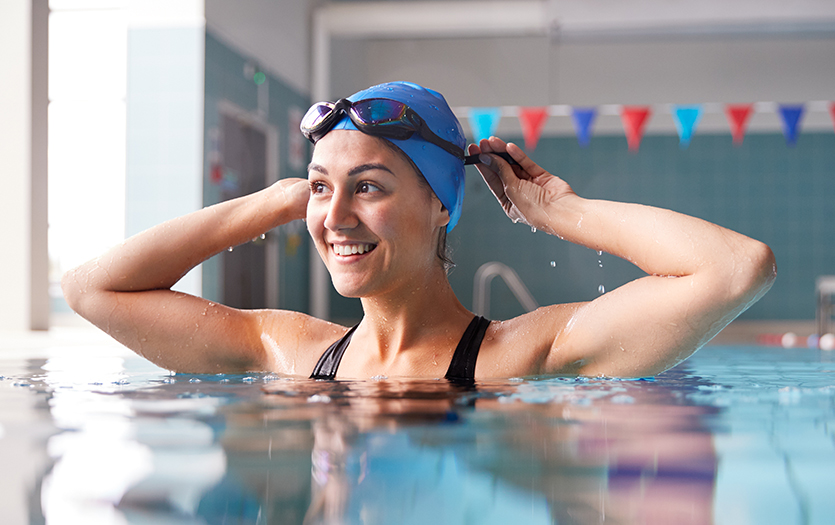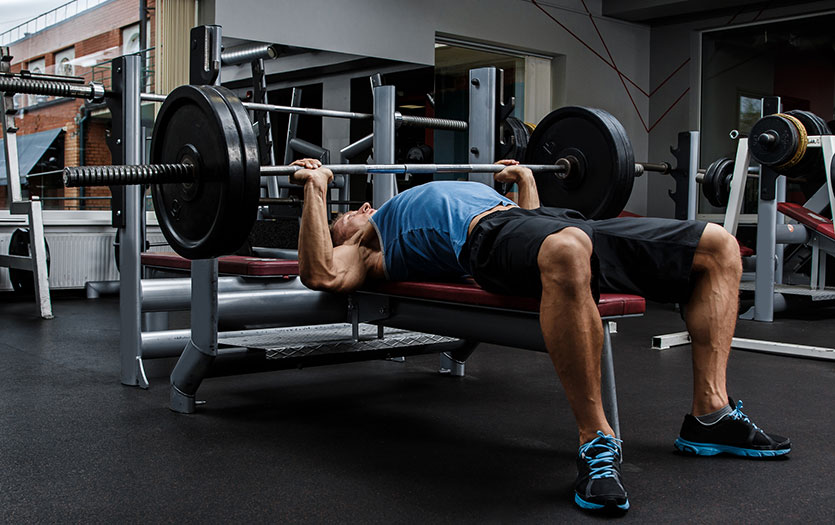
We enlisted Mackenzie Clark , MS, LAT, ATC, supervisor athletic training, Parkview Sports Medicine, for her take on the perks of hitting the pool to get your heart rate up and she threw in a shallow-water workout as a bonus!
Swimming is a fun, recreational sport for all ages and a great option during the hot summer months. Whether you hit the water for swim lessons, competitive swimming, recreational swimming, lap swimming or water aerobics, it’s a great way to gain physical, as well as mental, benefits for your well-being.
For children, swimming can facilitate coordination and agility skills as well as help strengthen muscles. When children learn how to swim, they also decrease their risk of drowning. The sport can provide a means of socialization for children when participating in a group setting, for example at the public pool, water park or beach. According to USA Swimming, competitive swimming can teach goal-orientation, high self-esteem and positive mental attitude.
For adults, swimming can burn a significant amount of calories. The key is the intensity and duration of the workout. Lap swimming for 60 minutes at a moderate to vigorous intensity will burn a substantial amount of calories and has a low impact on your joints. Athletic trainers, physical therapists, and/or physicians may recommend swimming after an injury or surgery due to the muscle strengthening and cardiovascular endurance benefits of swimming without putting stress on the injury.
Swimming is also a great cross-training workout for individuals who like to participate in other sports like running, basketball and volleyball, which can all be hard on your joints. Incorporating a swimming workout to your exercise routine, allows you to rest the joints but also maintain or improve your fitness level.
Water aerobics classes are very popular at local fitness clubs and public pools and are a great option for those suffering from arthritis. Due to the buoyancy of the water, 80 percent of your bodyweight is supported. Resistance and balance training can also be completed in the water. For example, with the resistance from the water, a hip flexion and extension (kicking forward and backwards with the knee staying straight) exercise can increase hip flexor and glut strength. This exercise can also improve balance. Lastly, swimming can provide a means of socialization for adults as well. Water aerobics classes are usually offered in groups. Bringing a friend to a class or making new friends can make the class more enjoyable, which reduces stress.
Put it into practice
Shallow Water Aerobics Workout
Warm-up:
-
Jogging in place for 2 minutes
-
Butt kicks for 2 minutes
-
High knees for 2 minutes
-
Wide high knees for 2 minutes
-
Lateral slides for 2 minutes
Cardio:
-
Jumping jacks for 30 seconds
-
Jog in place for 30 seconds
-
Cross-country ski for 30 seconds
-
Jog in place for 30 seconds
-
Pendulum swings for 30 seconds
-
Jog in place for 30 seconds
-
Basketball jumps for 30 seconds
-
Jog in place for 30 seconds
-
Front kicks for 30 seconds
-
Jog in place for 30 seconds
Rest
Repeat Exercises 2-3 times
Strengthening:
-
Squats- 10 repetitions
-
Walking lunges- 10 repetitions
-
Plie squat- 10 repetitions
-
Heel raises- 10 repetitions
-
Kicks - forward and back - 10 repetitions on each leg
Rest
Repeat Exercises 1-2 times
Stretch
Resources
http://waterfitnessandswim.com/index.html
http://www.livestrong.com/article/18842-many-calories-burned-swimming/
http://www.active.com/swimming/articles/9-good-reasons-why-you-should-get-in-the-pool
http://www.livestrong.com/article/477375-mental-physical-benefits-of-swimming/



